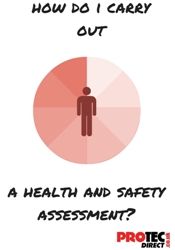A risk assessment is a vital step for ensuring the safety and well-being of your employees in the workplace. It is both beneficial to the business and complies with UK health and safety law.
In most cases, risks can be easily identified and avoided. For example, ensuring that spillages are cleaned up correctly or that walkways are kept free from trip hazards are straightforward measures that common sense dictates should be enforced in the workplace.
While the law does not expect any company to completely eliminate all risk (something which may be impossible) it does require that you go as far as ‘reasonably practical’ to do so. A risk assessment therefore involves a careful examination of what might cause harm to people in your workplace. Because accidents in the workplace do ruin lives, and damage the business, it is important that you do this thoroughly.
There is no set way of carrying out a risk assessment but the there are some widely used guidelines and a five-step programme recommended by the Health and Safety Executive (HSE).
Firstly, you need to identify hazards. These are described as anything that may cause harm in the workplace, including dangerous substances, electricity, ladders, excessive heights and weights, as well as more subtle dangers such as trips hazards and open drawers. Then you need to decide how these hazards might affect and harm the people who work around them, assessing the risk.
Risk can be defined as the chances, no matter how high or low, that someone may come to harm as a result of the hazard. These risks should be evaluated in order to decide on the necessary precautions you must take in order to prevent injury and harm.
You need to make sure you have recorded your findings and that you have implemented any measures that this data seems to suggest. Lastly, you should review your assessment on a regular basis and make any necessary changes to the procedure.
It is important not to overcomplicate the procedure, with many companies falling foul of excessive measures. In most cases the risks should be obvious and well known and the control measures equally easy to apply. You don’t have to be a health and safety expert to carry out a risk assessment, with many small firms being able to do so on their own. However, many larger organisations will have a health and safety adviser to help them carry out their assessments.
In many cases, the identification of risk and implementation of procedures to minimise this will involve the use of specialist equipment and personal protective equipment, known as PPE. If your assessment identifies that such measures are required, then by law it is the employer’s responsibility to provide this equipment and ensure it is in good working order and complies with acceptable standards.
It is also important to remember that all parts of the risk assessment process should be adequately recorded and stored in an available place. It is essential to make sure you have carried out your legal duty in this area, whether you’re an employer or employee.





Leave a comment